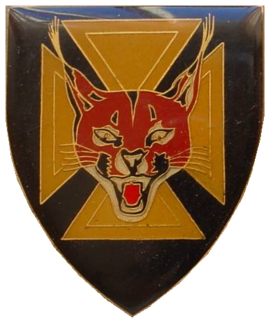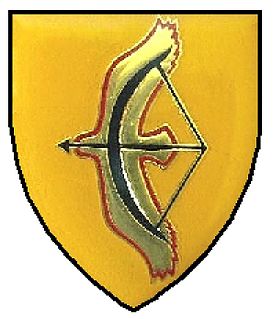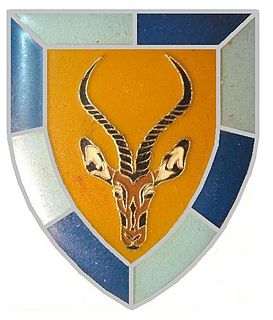
32 Battalion was a light infantry battalion of the South African Army founded in 1975, composed of black and white commissioned and enlisted personnel. It was disbanded on 26 March 1993.

The South West Africa Territorial Force (SWATF) was an auxiliary arm of the South African Defence Force (SADF) and comprised the armed forces of South West Africa from 1977 to 1989. It emerged as a product of South Africa's political control of the territory which was granted to the former as a League of Nations mandate following World War I.

61 Mechanised Battalion Group was a unit of the South African Infantry Corps; although it was classed as mechanized infantry, it was a combined arms force consisting of infantry, armour and artillery.
Operation Askari was a military operation during 1983 in Angola by the South African Defence Force (SADF) during the South African Border War.
Operation Prone was a proposed military operation by the South African Defence Force (SADF) and South West African Territorial Force (SWATF) during the South African Border War and Angolan Civil War between May and September 1988. With the advance of the 50th Cuban Division towards Calueque and the South-West Africa border, the SADF formed the 10 SA Division to counter this threat. The plan for Operation Prone had two phases. Operation Linger was to be a counterinsurgency phase and Operation Pact a conventional phase.

101 Battalion(pronounced as one-o-one Battalion) was a quick-reaction unit of the South West African Territorial Force, composed of black and white commissioned and enlisted personnel.

7 Medical Battalion Group is the specialist Airborne Medical Unit of the South African Military Health Service. The Battalion's main task is to render medical support to the South African Airborne and Special Forces.

44 Parachute Brigade was a parachute infantry brigade of the South African Army. It was founded on 20 April 1978, by Colonel Jan Breytenbach, following the disbandment of 1 SA Corps and the battle of Cassinga. Upon formation, the brigade was commanded by Brigadier M. J. du Plessis, who was assigned the task of establishing by working with the Parachute Staff Officer, Colonel Jan Breytenbach. At the time du Plessis was the commanding officer of the Orange Free State Command and had previous experience serving in 1 Parachute Battalion. Breytenbach had also been a member of 1 Parachute Battalion and had also founded the South African Special Forces Brigade and 32 Battalion. The location that was chosen for the brigade's headquarters was in the lines of the OFS Cmd Headquarters, next to the old Tempe Airfield in Bloemfontein.

7 South African Infantry Battalion is a motorised infantry unit of the South African Army.

3 South African Infantry Battalion is the Basic training unit of the South African Army.

31 Battalion was a light infantry battalion in the South African Army and in later years became part of the SWATF. The battalion consisted of men recruited from the hunter-gatherer San people. It was later called 201 Battalion.

8 South African Infantry Battalion is a mechanized infantry unit of the South African Army. The battalion is equipped with Ratel Infantry Fighting Vehicles (IFV) used for fast transport and combat mobility across rough ground. Support weapons for mechanized infantry are also provided with motorized transport, or are built directly into these IFVs, in order to keep pace with the IFVs in combat. The battalion was raised at Upington in the Northern Cape in 1973, and assigned to the Infantry Formation.

33 Battalion or the Eastern Caprivi Battalion, was a light infantry battalion that was part of the SWATF.

36 Battalion was a light infantry battalion in the South African Army and in later years became part of the SWATF.

102 Battalion(pronounced as one-o-two Battalion) was a quick-reaction unit of the South West African Territorial Force. The battalion lost 36 men.

1 SWASpes was part of the South West African Territorial Force.

Regiment Louw Wepener was an infantry battalion of the South African Army. As a reserve force unit, it had a status roughly equivalent to that of a British Army Reserve or United States Army National Guard unit.

South West Africa Command was a command of the South African Army.
The 4th Infantry Battalion was an Irish military unit.




















